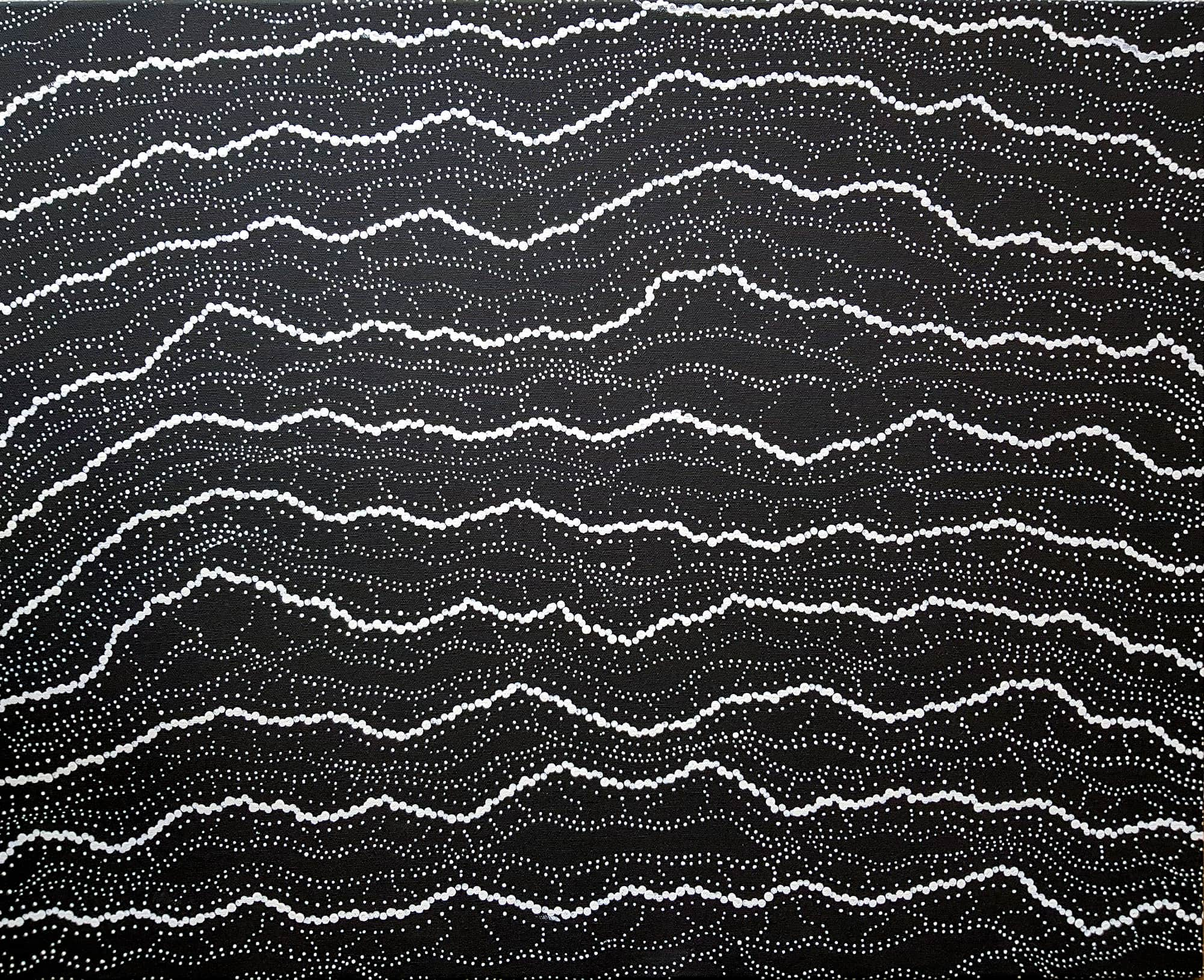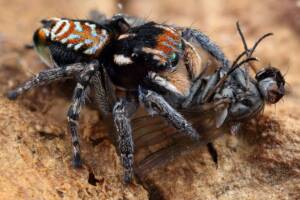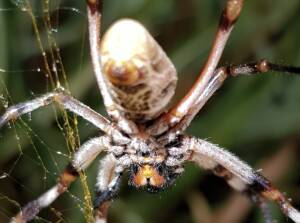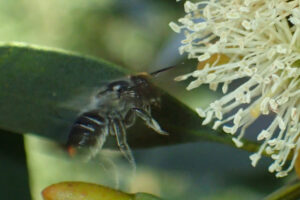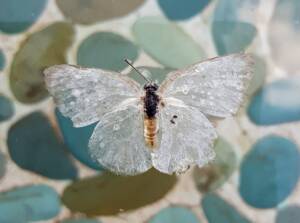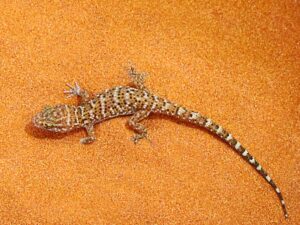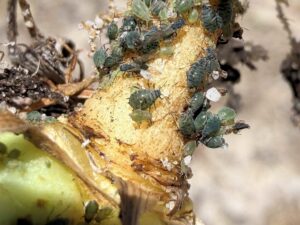Aboriginal DreamingBrolga Dreaming Flowers of Blood How the Perentie and Goanna got their Colours Gnoilya (Wild Dog) Tmerga Water Dreaming
Australian Aboriginal Tales of the Dreaming…
| WARNING: Aboriginal and Torres Strait Islander people are warned that this website contain images, voices and names of people who have passed away. |
Water features prominently In Aboriginal Dreamtime stories and culture. Its importance, especially in the vast arid regions of Australia, is understandable, where finding water was important for survival. The dreamtime stories was a way of passing the knowledge of how to find water, passed down orally and also depicted in artwork.
The Water Dreaming stories was a way for the Elders and those with permission to tell the stories, to pass on the knowledge. It is no surprise that “Water Dreaming” features in the artwork of Aboriginal painters.
Aboriginal artists paint their dreaming often based on symbolism. Their paintings may include symbols like concentric circles to represent waterholes, lines for thunder and lightning, and dots for rain. The paintings can be symbolic, representing rockholes and soakages, being places where fresh water is found, or they can be of (often dry) rivers and creeks, or of water flowing above and underground.
In the following painting “Pirlinyanu Site – Water Dreaming”, the artist Julie Nangala Robertson paints her Ngapa Jukurrpa (Water Dreaming), using a distinctive monochromatic palette and from an aerial perspective. This painting is associated with her father’s traditional country of Pirlinyanu, a rocky outcrop in the Tanami Desert, west of Yuendumu and towards the Western Australia border.
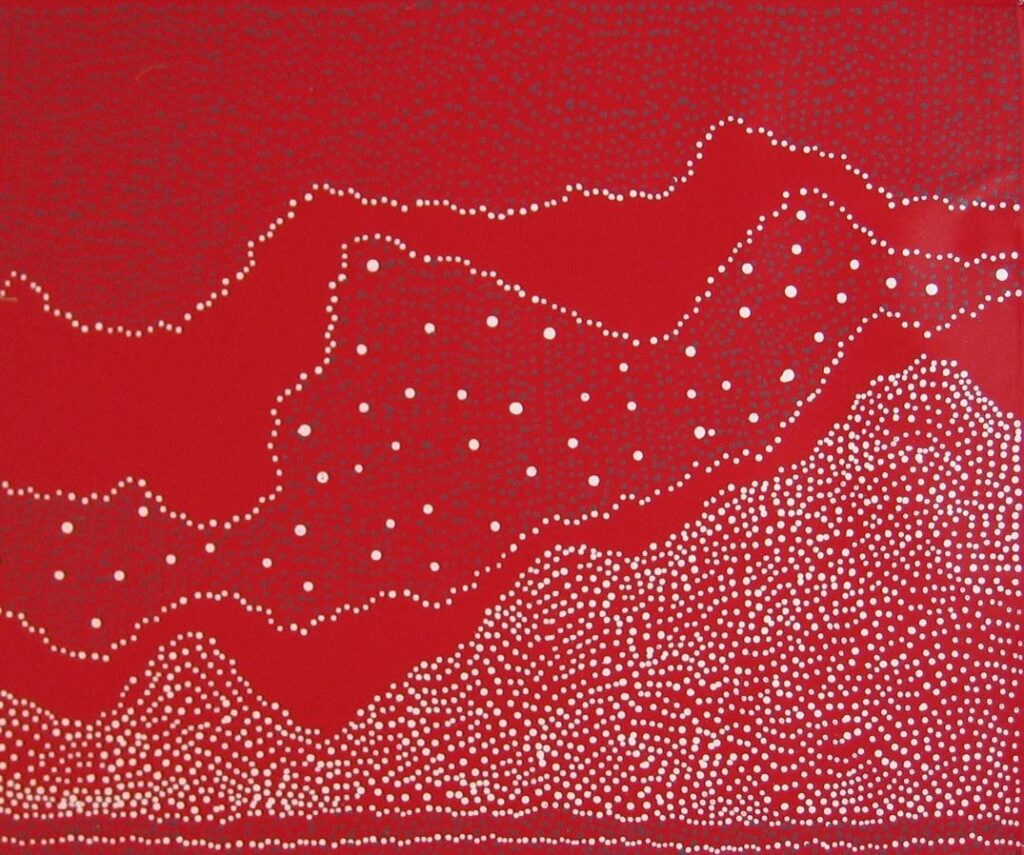
Strikingly different, is the following painting Ngapa Jukurrpa (Water Dreaming) by Shorty Jangala Robertson, that tells the story of two Jangala men (who are rainmakers), who sang to summon a powerful storm. His Ngapa Jukurrpa (Water Dreaming) is usually centred at the remote areas of Puyurru and Pirlinyarnu (Mount Farewell), over 160 kms west of the Yuendumu in the Northern Territory.
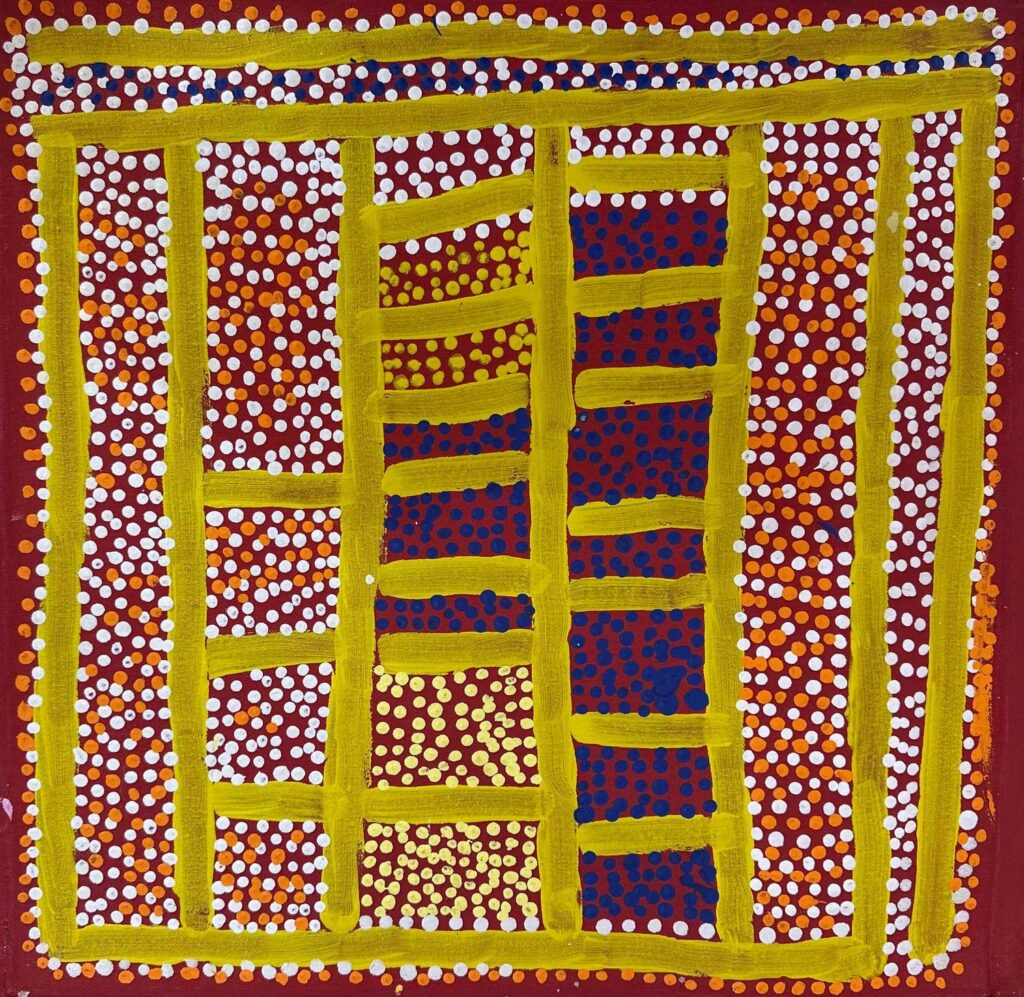
This striking painting titled Ngapa Jukurrpa (Water Dreaming) by senior Warlpiri artist Shorty Jangala Robertson (1930–2014) depicts the significant site of Puyurru, located west of Yuendumu, approximately 300 km northwest of Alice Springs. The artwork captures the unique geography and mythology of this location, where a usually dry creek bed contains water soakages, or naturally occurring wells, represented by the long, straight lines in the etching.
The story behind this artwork tells of two Jangala men, rainmakers, who sang to summon a powerful storm. The storm unleashed lightning and traveled across the land, eventually meeting another storm from Wapurtali in the west. A bird carried the combined storms further west, but the weight became too much, and the storm was dropped at Purlungyanu, creating a giant soakage. At Puyurru, the bird unearthed a giant snake, Wanayarra, which carried water that formed a large lake called Jillyiumpa. This lake holds cultural and spiritual significance, and an outstation at the site is still home to Shorty’s family today.1
Source: Gallery Gondwana, https://www.gallerygondwana.com.au/
The following painting by Trephina Sultan Thanguwa is titled Following the Creeks and Waterholes, with the background colour to represent the country both above and below ground.
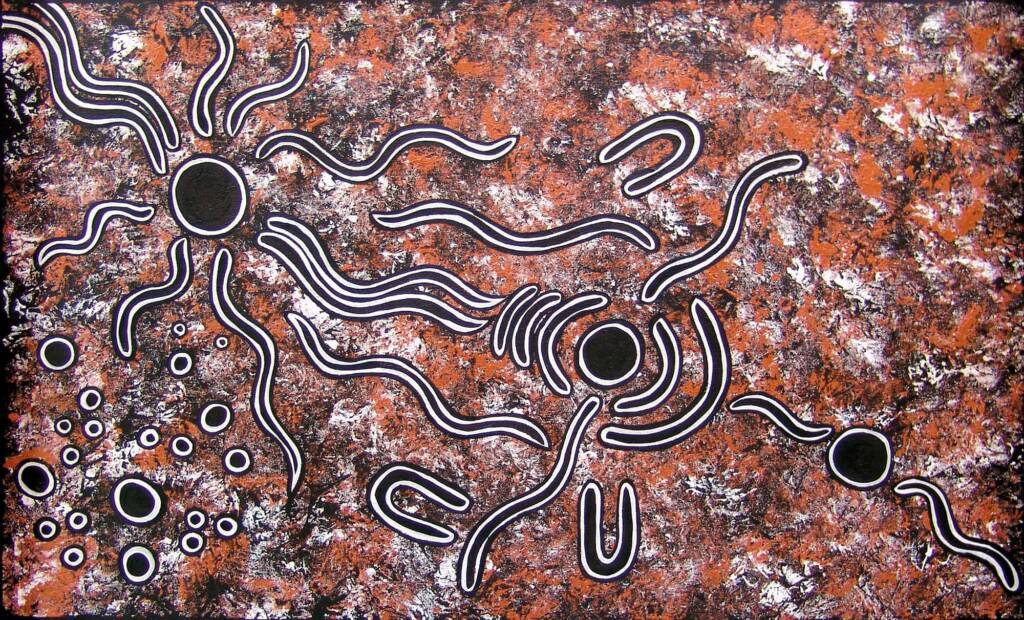
In this painting Kapi-Nguru (from water) by Trephina Sultan, she reduces the colours to a monochromatic palette, representing dry creek and river beds. She then strikingly used a single blue line across the canvas, inviting the viewer to see a flowing river (above ground or is it underground).
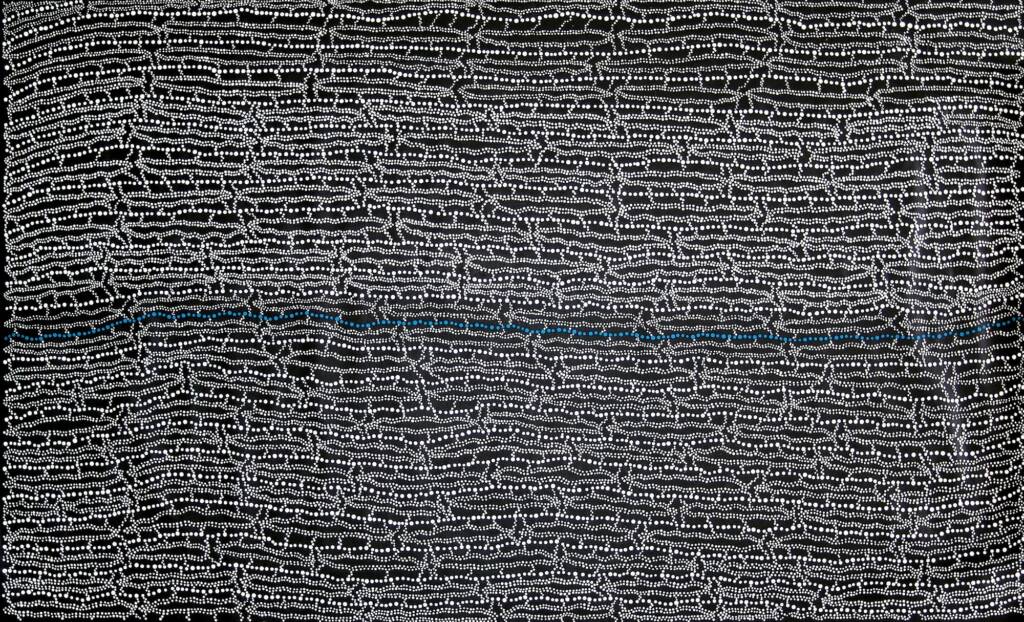
In the following painting Ngapa Jukurrpa (Water Dreaming) by Sabrina Nangala Robertson, the Dreaming story is associated with Mikanji, a usually dry watercourse west of Yuendumu. This sacred narrative features mulju (soakages) in the creek bed that holds profound cultural significance for the Jangala/Jampijinpa men and Nangala/Nampijinpa women, who are its custodians.
In this painting Sabrina uses iconic motifs to tell this story, including concentric circles representing mulju and short bars symbolizing mangkurdu (cumulus and stratocumulus clouds).
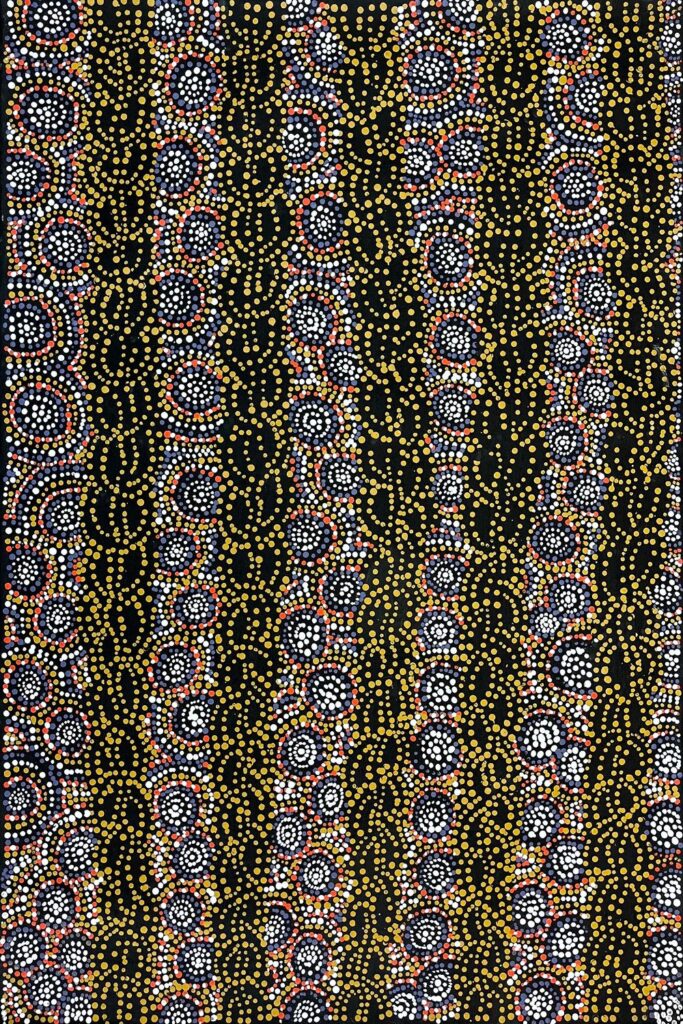
(source Gallery Gondwana)
In the Water Dreaming / Tkatja by Raymond Walters Japanangka, he paints the water symbols (there are 7 of them), four visible circles and another three that are almost invisible, that are etched using the texture of the thick bronze / copper metallic paints.
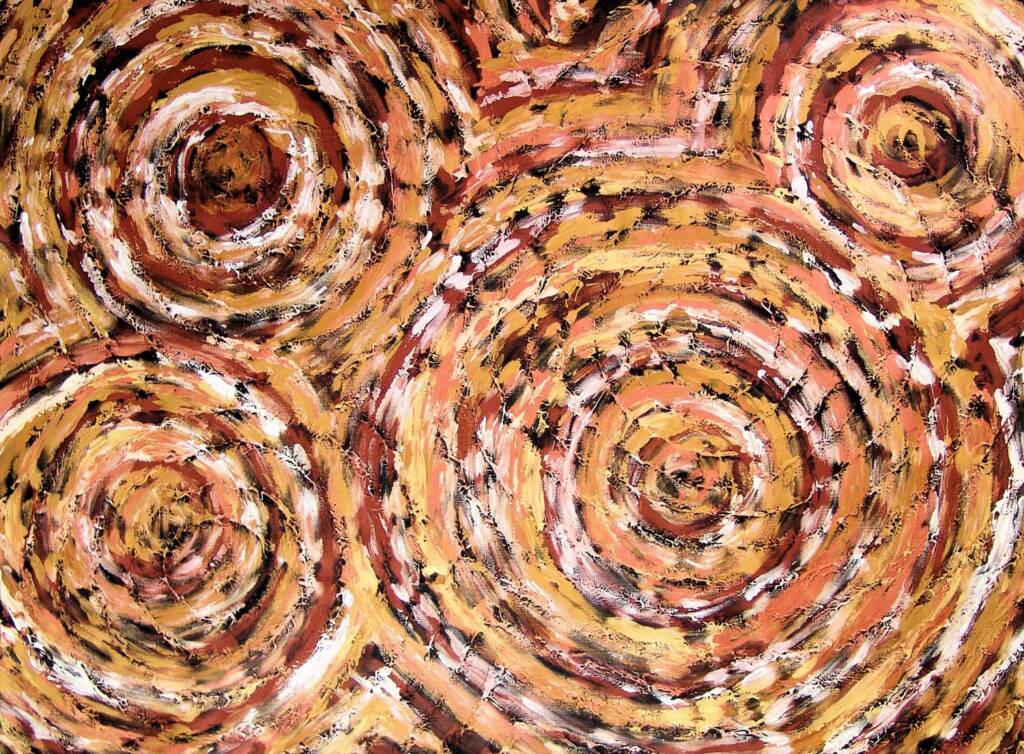
Following selection of Water Dreaming artworks from Gallery Gondwana…
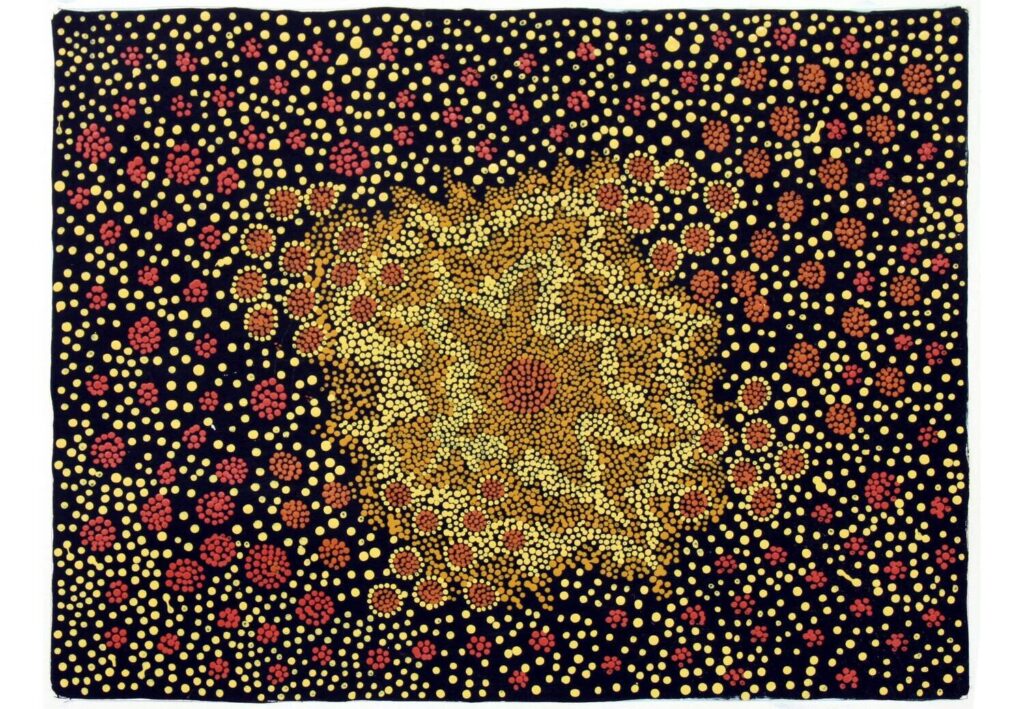
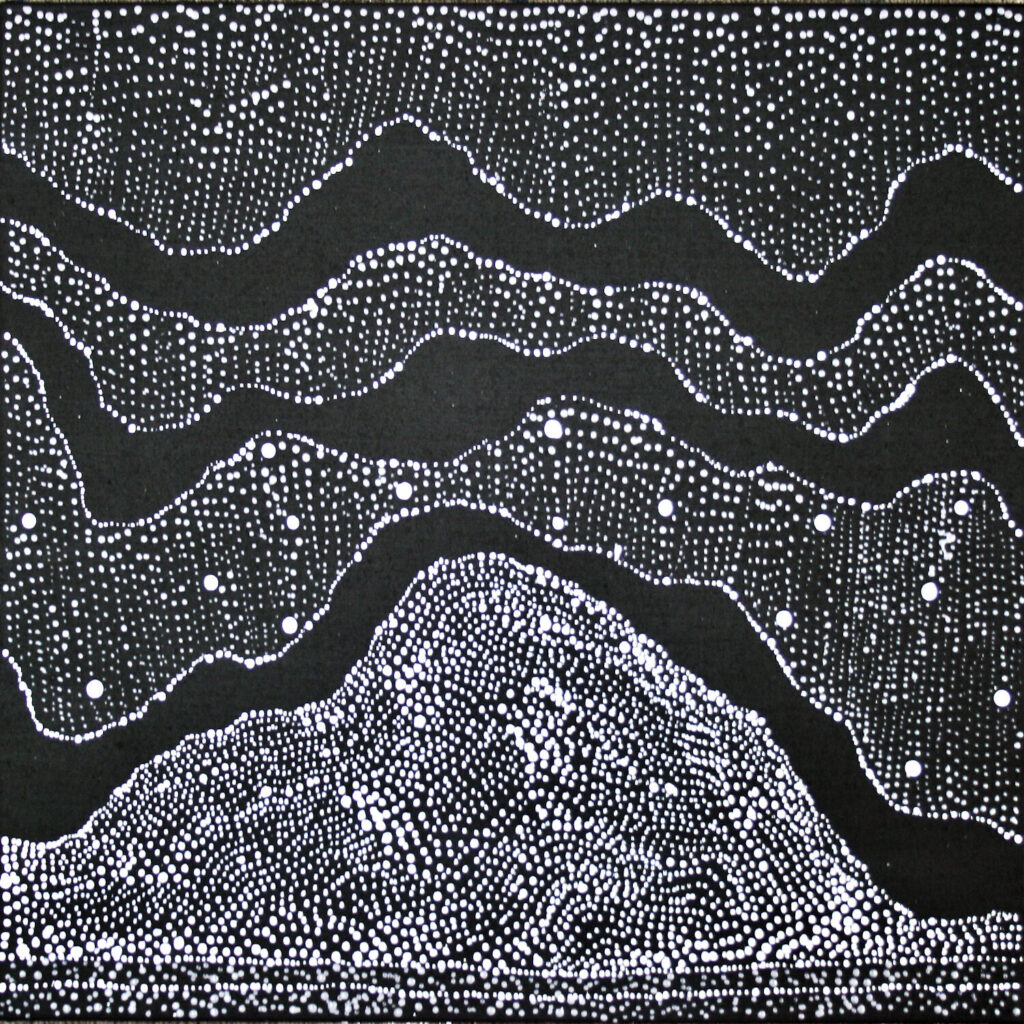
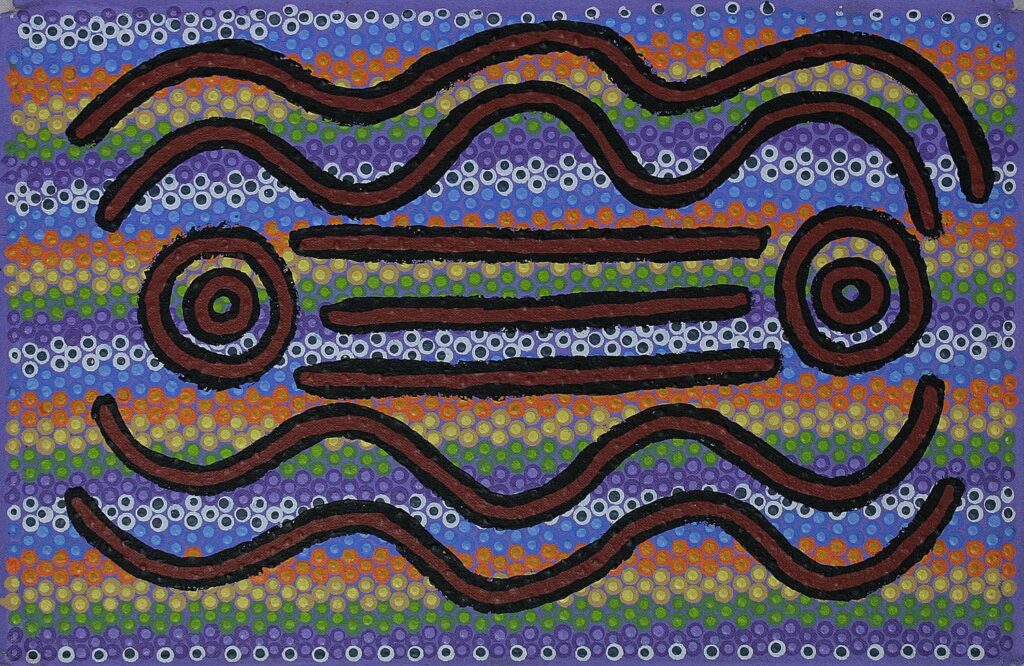
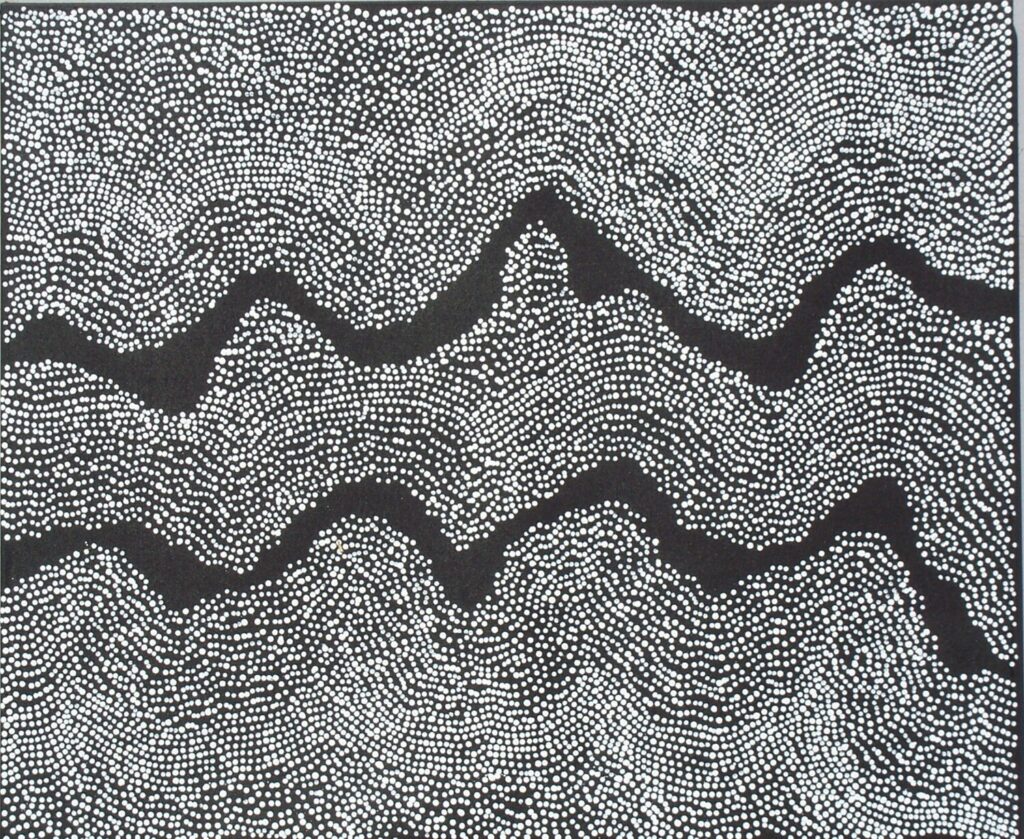

Footnote & References
- Source courtesy of Gallery Gondwana, https://www.gallerygondwana.com.au/
- Water Dreaming (2005) 76 x 91 cm (9268JR) by Julie Nangala Robertson (Gallery Gondwana)
- Ngapa Jukurrpa 46 x 46 cm (2091/06SR) by Shorty Jangala Robertson (Gallery Gondwana)
- Ngapa Jukurrpa (Water Dreaming) 60 x 90 cm (9006SR) by Sabrina Nangala Robertson (Gallery Gondwana)
- ‘Dreamings’ and dreaming narratives: what’s the relationship?, Christine Judith Nicholls, Flinders University, ART ARK, https://artark.com.au/blogs/news/part-3-dreamings-and-dreaming-narratives-whats-the-relationship
Aboriginal DreamingBrolga Dreaming Flowers of Blood How the Perentie and Goanna got their Colours Gnoilya (Wild Dog) Tmerga Water Dreaming
Aboriginal Art & CultureAboriginal Art Centres Aboriginal Art Centres Aboriginal Dreaming Aboriginal Symbols
Art & CultureAboriginal Artists Artists Aboriginal Art & Culture Literary and Poets

